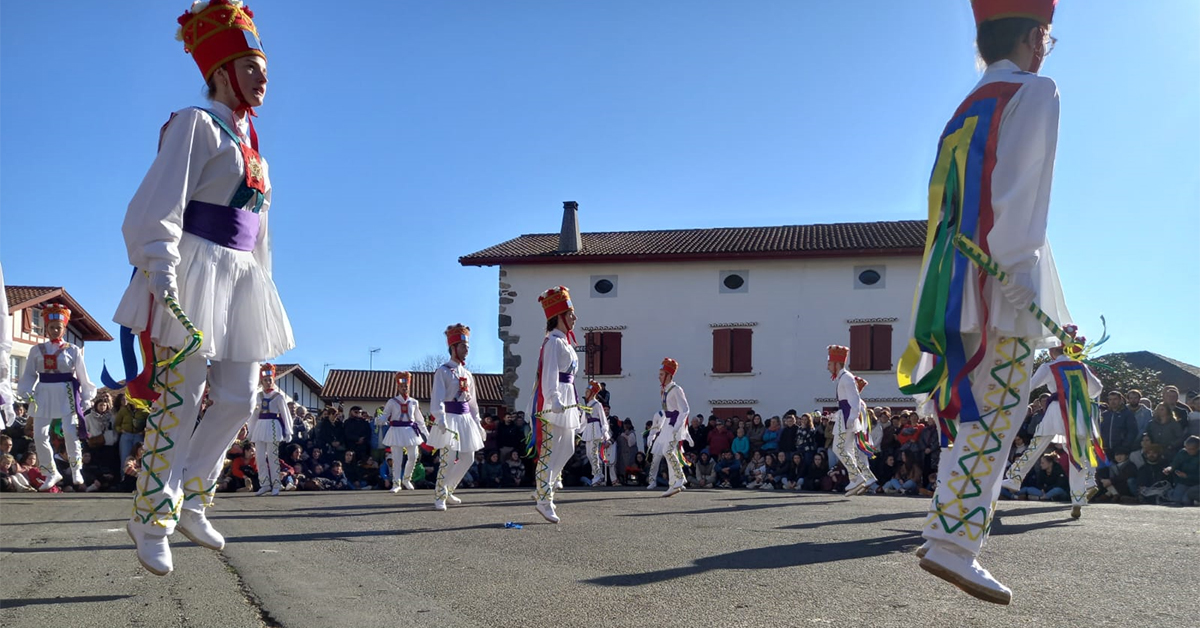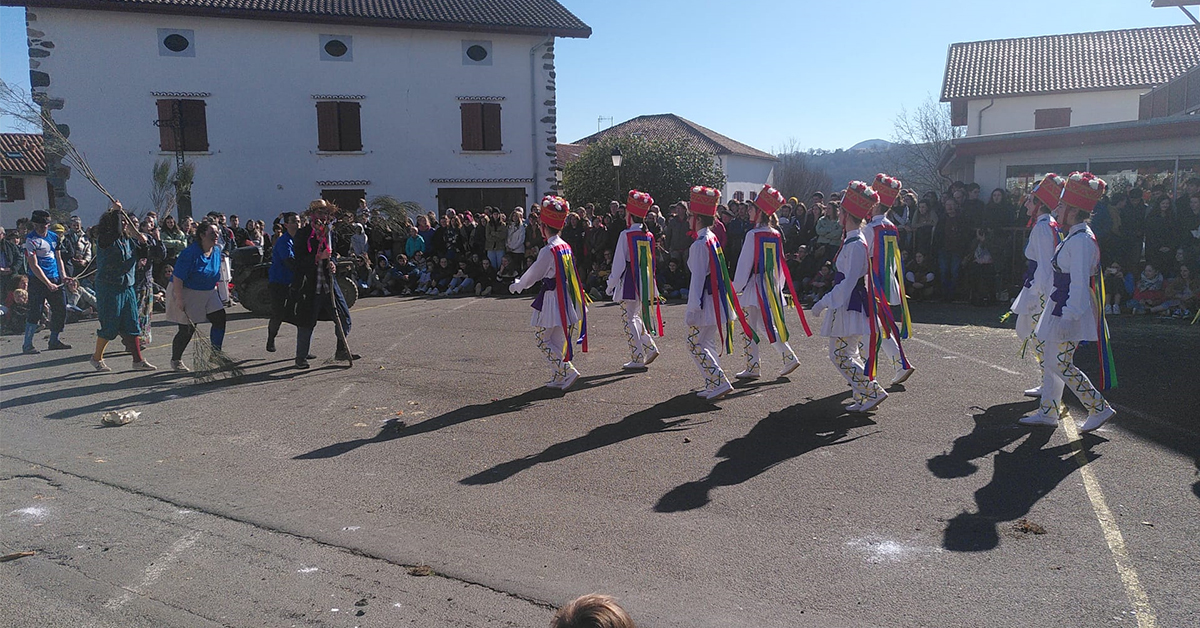Basque ethnography at a glance
The Zuberoa masquerades, the cowbells (Joaldunak) of Ituren and Zubieta, the Lantz carnival… are well-known. That is not the case of Santibate (cowbell ringing) and Libertimendua, at least not outside Iparralde (the part of the Basque Country coming under France). There are two essential aspects to this carnival in Baja Navarra: Santibate’s night – the festivity of Zirtzilak (vagabonds) – and Libertimendua Day – the festivity of the Bolantes (courtship dancers) –. Young people go from house to house or from bar to bar in Santibate and spend the night singing or improvising bertsos (Basque improvised verse). Today’s article focuses on Libertimendua Day and we will leave Santibate for another occasion.
This festivity was reintroduced in the Garazi area by Antton Luku and was then brought to Donapaleu by Mattin Irigoien. It later spread to the Hergarai and Aldude valleys. It then crossed the border into Labourd and began to be celebrated in Makea, Lekorne, and the Luhuso area. And finally, the young people of Hazparne also began to celebrate it three or four years ago.
The 2023 season will kick off in Lekorne on 12 February. Unlike the masquerades, each town only holds the festivities on one day.
We are not going to theorise about this celebration. If you would like further information, we recommend consulting the comprehensive work by Antton Luku (Libertitzeaz, Pamiela, 2014). The local television channel Kanaldude also provides coverage of the event.
The characters are the zirtzilak (vagabonds) who perform the toberas, critical comedy sketches; the bersolaris (impro poets) who comment on what the zirtzilak have to say; the Bolantes who dance in the intervals, and the local musicians who accompany all the performers.
The festivity is organised as follows: The local young people meet up first thing in the morning to dress up and get ready for the parade that sets off at 10.00 a.m. All the characters go through the streets in an organised fashion. (Antton Luku points out that the Garazi parade symbolises the awakening of the dragon).
The parade is led by the zanpur, followed by the Makilaria (people carrying the makila, a traditional Basque walking stick) and Basandere or Andere Xuria (Lady of the Forest or the White Lady). Then come the Bolantes and the musicians, and the Zirtzilak are the last to arrive in the square.
The latter perform a review of the events of the previous year, interspersed with comments from the bersolaris and dances by the Bolantes. The celebration ends with a communal meal in the town for the participants and the spectators alike.
The Zirtzilak cover local or more general topics. They often refer to the challenges facing the young people of Euskal Herria (Greater Basque Country) and therefore the topics are repeated in one town and another. It should be noted that the participants in Libertimendua are a small group of young Basque speakers from Iparralde; and as the total population of Iparralde is similar to that of Santutxu, it is hardly surprising that the topics of Donapaleu, Garazi or Makea are the same.
The spread of the festivity: As far as Garazi is concerned, this festivity began to be celebrated 20 years ago and has naturally spread to other localities. The Hazparne performers began recently (three years ago) and are still the first generation; and in Makea, the first Zirtzilak players are the ones who are currently passing on their know-how to the town’s young people.
Even though this tradition has spread to different towns, its future is not guaranteed. It is facing two great challenges: finding young people who want to join the Zirtzilak groups, and ensuring the generational handover.
Those two challenges are closely linked to the survival of the very euskaldun or Basque speaking ecosystem.
Pantxix Bidart Pla



